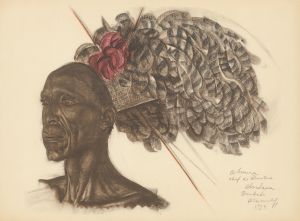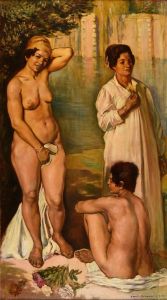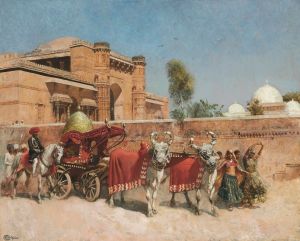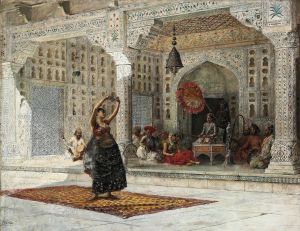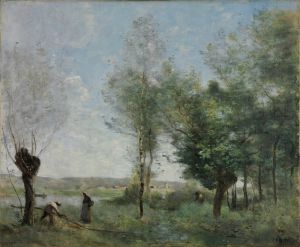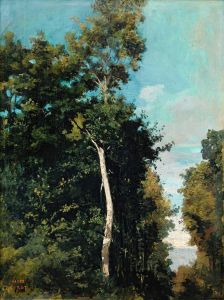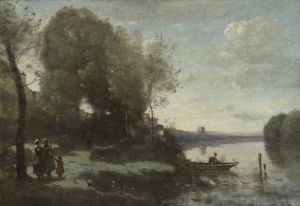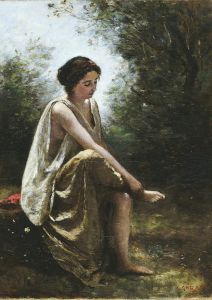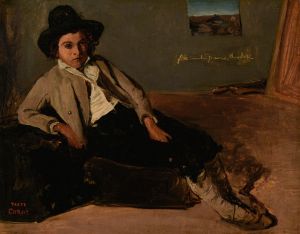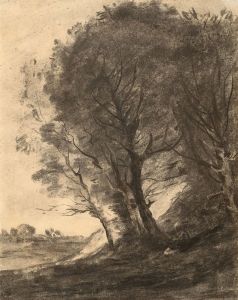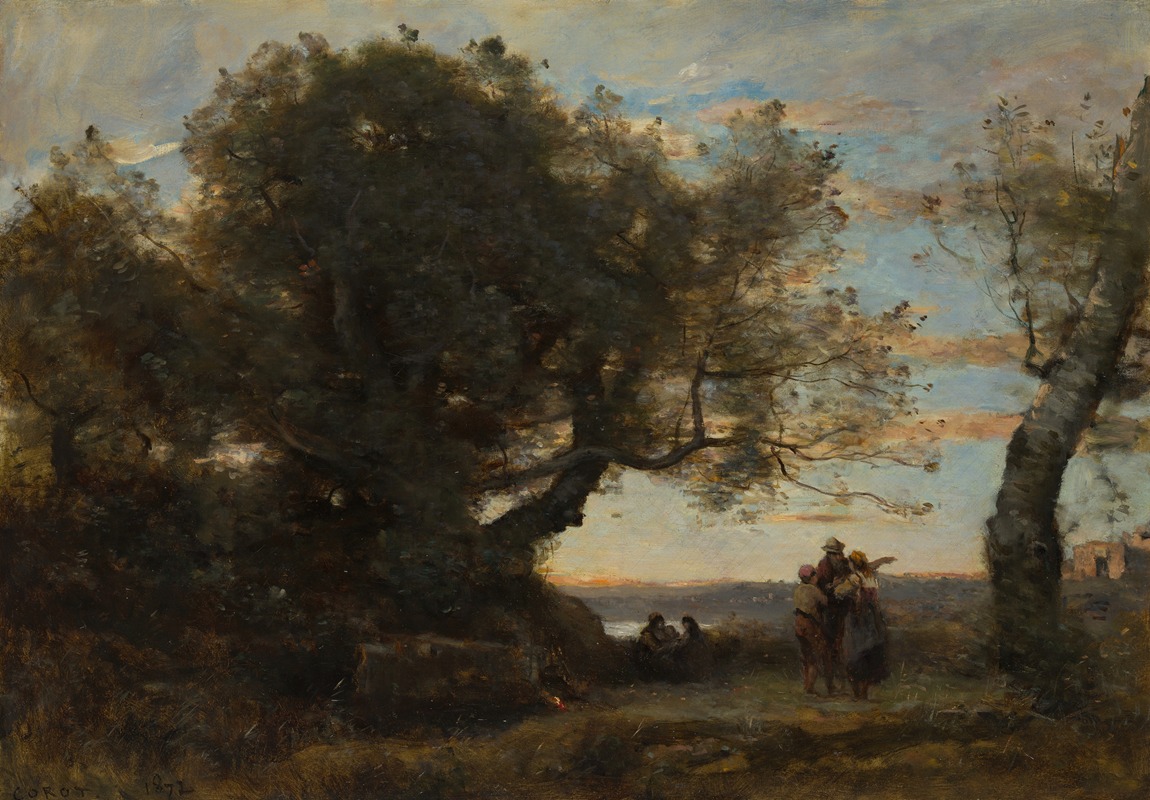
The Gypsies
A hand-painted replica of Jean-Baptiste-Camille Corot’s masterpiece The Gypsies, meticulously crafted by professional artists to capture the true essence of the original. Each piece is created with museum-quality canvas and rare mineral pigments, carefully painted by experienced artists with delicate brushstrokes and rich, layered colors to perfectly recreate the texture of the original artwork. Unlike machine-printed reproductions, this hand-painted version brings the painting to life, infused with the artist’s emotions and skill in every stroke. Whether for personal collection or home decoration, it instantly elevates the artistic atmosphere of any space.
Jean-Baptiste-Camille Corot, a prominent French landscape and portrait painter, created "The Gypsies" during the 19th century. Corot is widely recognized for his contributions to the Barbizon School and his role in bridging the neoclassical tradition with the emerging Impressionist movement. His works often feature serene landscapes, capturing the subtle interplay of light and shadow, and "The Gypsies" is no exception.
"The Gypsies" is an oil painting that exemplifies Corot's mature style, characterized by a harmonious blend of figures and landscape. The painting depicts a group of Romani people, often referred to as gypsies, resting in a natural setting. Corot's choice of subject reflects a broader 19th-century European interest in Romani culture, which was often romanticized in art and literature of the time. The painting captures the essence of a transient lifestyle, with figures portrayed in a moment of repose amidst a tranquil landscape.
Corot's technique in "The Gypsies" showcases his mastery of light and atmosphere. The figures are integrated into the landscape, with soft, muted colors that create a sense of unity and tranquility. The use of light is particularly notable, as Corot employs it to highlight the figures and the surrounding environment, creating a luminous effect that enhances the painting's overall mood. This approach is indicative of Corot's influence on the Impressionists, who admired his ability to capture the fleeting effects of light and atmosphere.
The composition of "The Gypsies" is carefully balanced, with the figures positioned in a way that draws the viewer's eye across the canvas. Corot's attention to detail is evident in the rendering of the figures' clothing and the natural elements surrounding them. The landscape serves not merely as a backdrop but as an integral part of the scene, reflecting Corot's belief in the interconnectedness of humans and nature.
Corot's depiction of Romani people in "The Gypsies" is reflective of the 19th-century artistic fascination with exotic and marginalized communities. While the painting does not delve into the complexities of Romani life, it offers a glimpse into the romanticized view prevalent during Corot's time. This perspective was common among artists and writers who often portrayed Romani people as symbols of freedom and a connection to nature.
"The Gypsies" is housed in the Musée du Louvre in Paris, where it remains an important example of Corot's work and his contribution to the development of modern art. The painting continues to be studied for its technical brilliance and its place within the broader context of 19th-century European art. Corot's influence on subsequent generations of artists, particularly the Impressionists, underscores the significance of works like "The Gypsies" in the evolution of artistic styles and themes.
In summary, "The Gypsies" by Jean-Baptiste-Camille Corot is a testament to the artist's skill in blending figures and landscapes to create a harmonious and evocative scene. Through his masterful use of light and composition, Corot captures a moment of serene beauty, reflecting both the romantic ideals of his time and his enduring impact on the art world.






